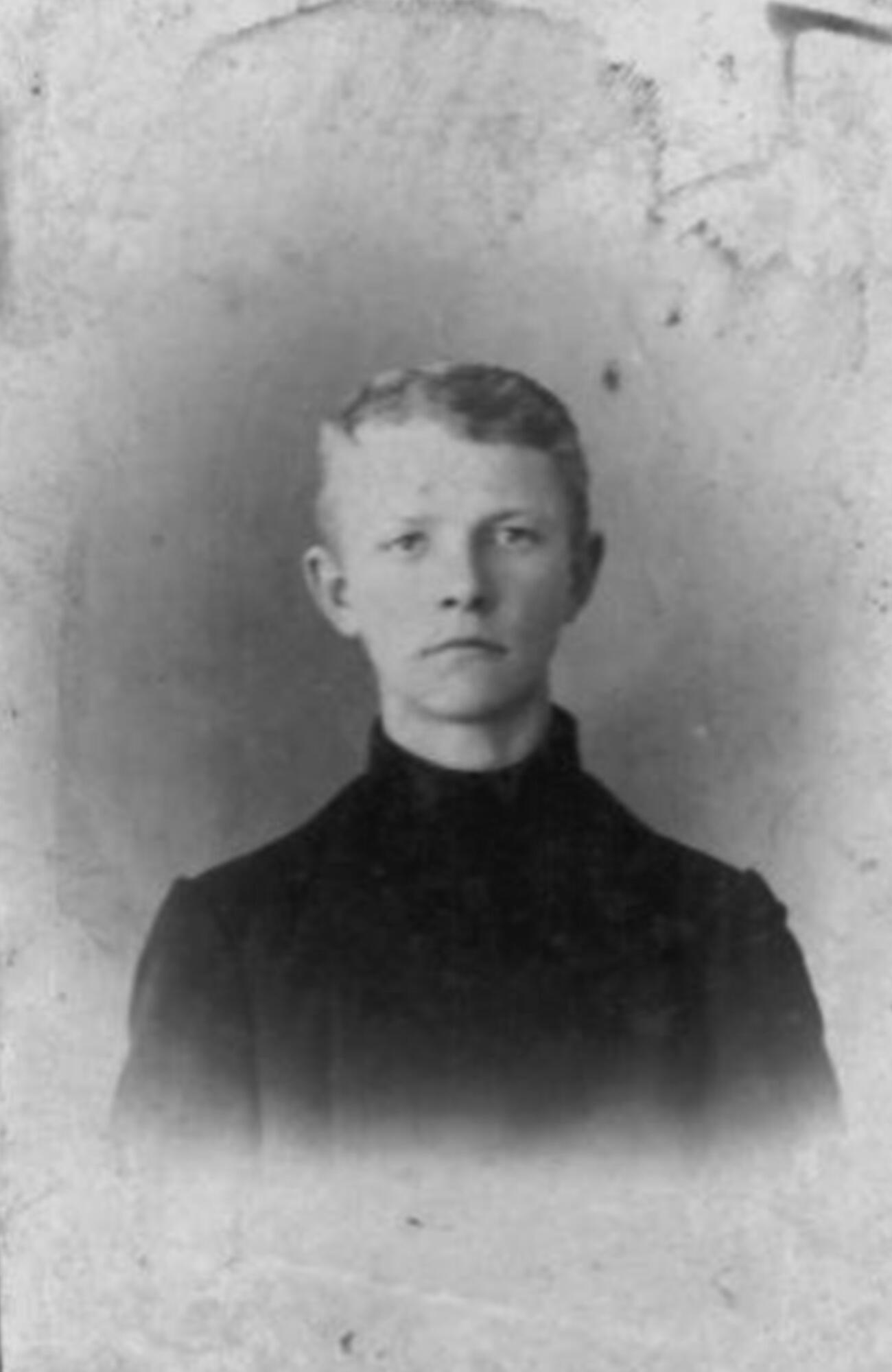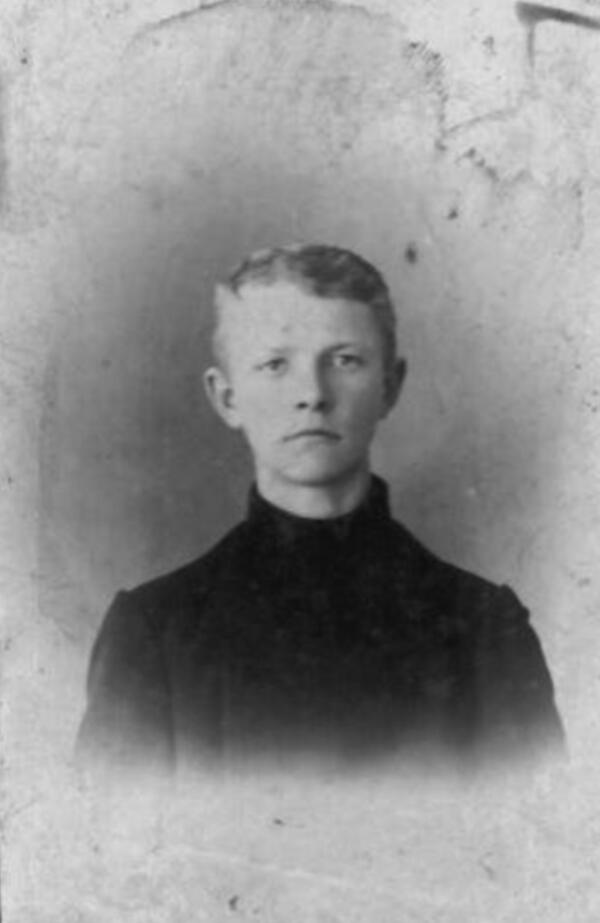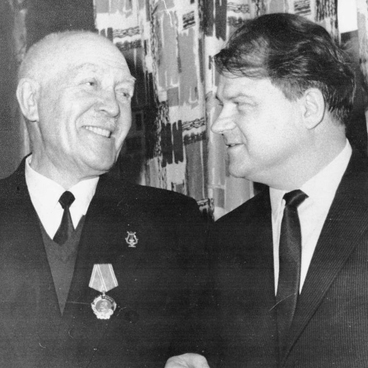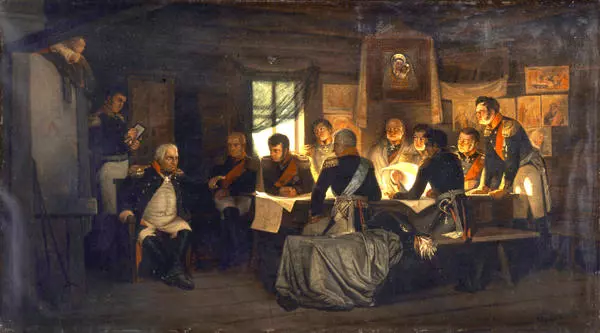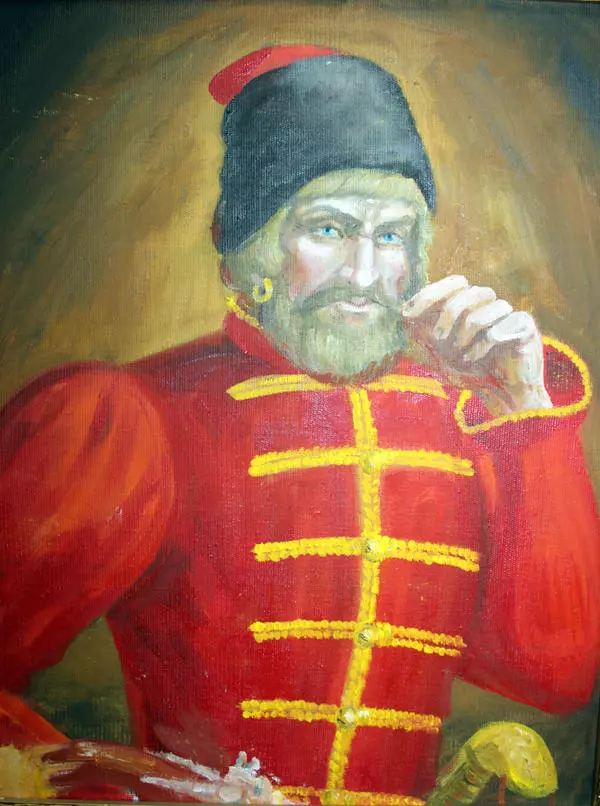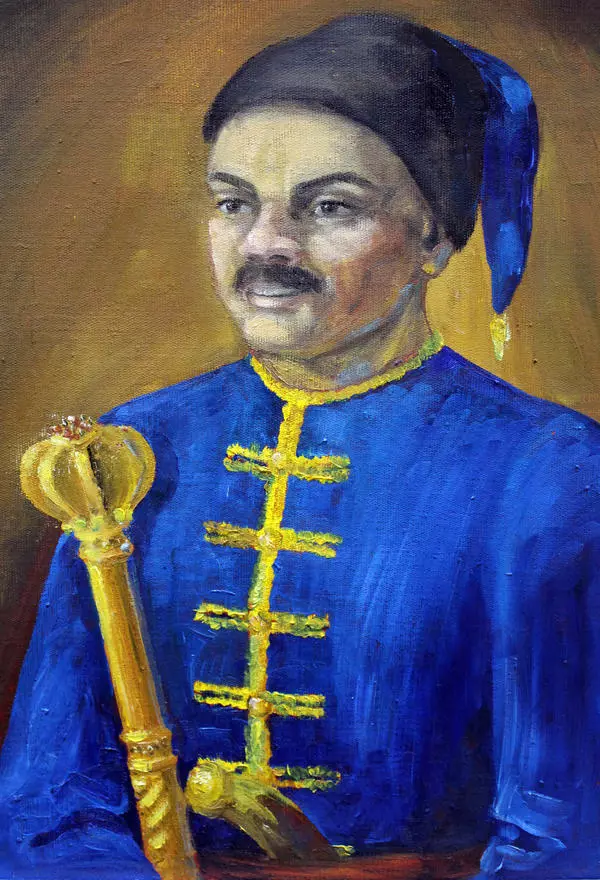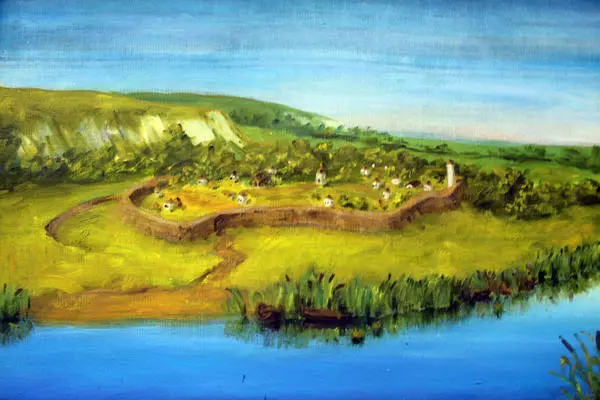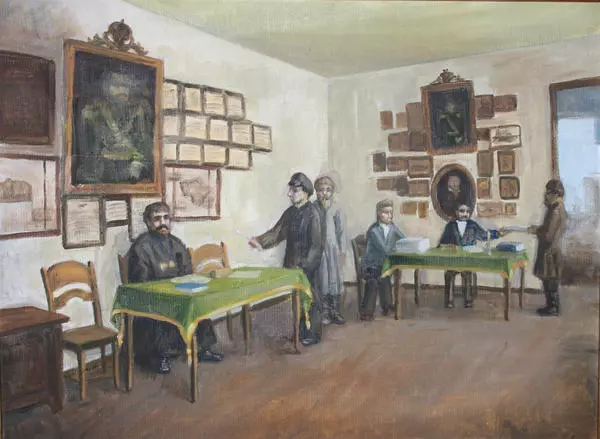The picture shows Boris Khrennikov, the elder brother of Tikhon Khrennikov. The photo was taken in the 1920s at A. Klimenko’s studio. It is printed on a thick cardboard with the photo studio logo.
Boris was born in 1892 in Yelets. Like his older brother Nikolay, he was fond of technical sciences since childhood, and was employed as a railway worker. During the Civil War (1917-1922), he was a teacher of infantry courses, and together with his cadets, he defended the town from the troops of Ataman Mamontov.
When the war is over, Boris returns to the profession of a railway worker — he worked as the head of Luchok railway station in Yelets. He lived on Oktyabrskaya Street with his family: his wife Maria and sons Vyacheslav and Oleg. His relatives recalled him as an honest, hardworking and modest person. Boris loved music and mastered the guitar, mandolin and violin on his own.
In 1937, the elder brothers of Tikhon Nikolayevich were arrested on a false denunciation. Boris was sentenced to ten years in prison for being “an active participant in the counter-revolutionary fascist sabotage insurrectionary organization, which was working to prepare an armed uprising against Soviet power. He organized a counterrevolutionary sabotage group and carried out preparations for committing sabotage acts on railway transport”. Tikhon Nikolayevich managed to get Nikolay’s acquittal, but he could not help Boris, and all his life he blamed himself for this. He was rehabilitated only in 1957.
Boris served his sentence in the town of Kotlas, and then he was transferred to Vychegda. In May 1943, he was transferred to a settlement, where he worked in his specialty: at the Knyazh-Pogost railway station in the Komi ASSR. In his first letter to his family, he asked them to send him, along with makhorka, the notes of his favorite arias from operas.
Difficult living conditions and the death of his brother Nikolay (1942), son Vladislav (1943) and mother Varvara Vasilievna (1943) undermined Boris’s health, and in August 1943 he died. He was buried in Knyazh-Pogost, but the exact location of the grave is unknown.
The photograph was given to the house-museum by Veronica — Boris’s niece, Nikolay’s daughter.
Boris was born in 1892 in Yelets. Like his older brother Nikolay, he was fond of technical sciences since childhood, and was employed as a railway worker. During the Civil War (1917-1922), he was a teacher of infantry courses, and together with his cadets, he defended the town from the troops of Ataman Mamontov.
When the war is over, Boris returns to the profession of a railway worker — he worked as the head of Luchok railway station in Yelets. He lived on Oktyabrskaya Street with his family: his wife Maria and sons Vyacheslav and Oleg. His relatives recalled him as an honest, hardworking and modest person. Boris loved music and mastered the guitar, mandolin and violin on his own.
In 1937, the elder brothers of Tikhon Nikolayevich were arrested on a false denunciation. Boris was sentenced to ten years in prison for being “an active participant in the counter-revolutionary fascist sabotage insurrectionary organization, which was working to prepare an armed uprising against Soviet power. He organized a counterrevolutionary sabotage group and carried out preparations for committing sabotage acts on railway transport”. Tikhon Nikolayevich managed to get Nikolay’s acquittal, but he could not help Boris, and all his life he blamed himself for this. He was rehabilitated only in 1957.
Boris served his sentence in the town of Kotlas, and then he was transferred to Vychegda. In May 1943, he was transferred to a settlement, where he worked in his specialty: at the Knyazh-Pogost railway station in the Komi ASSR. In his first letter to his family, he asked them to send him, along with makhorka, the notes of his favorite arias from operas.
Difficult living conditions and the death of his brother Nikolay (1942), son Vladislav (1943) and mother Varvara Vasilievna (1943) undermined Boris’s health, and in August 1943 he died. He was buried in Knyazh-Pogost, but the exact location of the grave is unknown.
The photograph was given to the house-museum by Veronica — Boris’s niece, Nikolay’s daughter.
